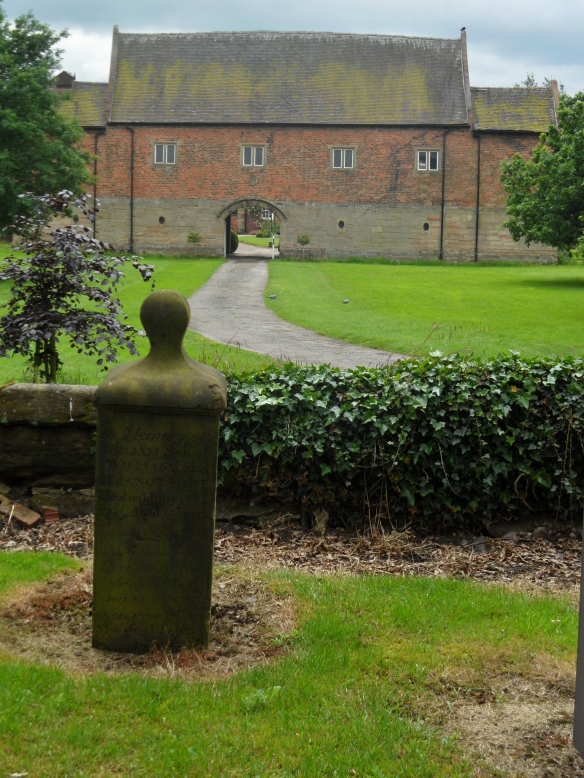Legend has it that in July 1403, two feuding neighbours from opposite sides of the River Trent set out to fight on opposite sides at the Battle of Shrewsbury. Sir William Handsacre was for the rebel Sir Henry ‘Hotspur’ Percy and loyal to King Henry IV was Sir Robert Mavesyn, whose name was said to derive from the French malvoisin meaning ‘dangerous neighbour’. At Bridge Meadow, near to the site of High Bridge, it’s believed that the paths of the two enemies crossed, as did their swords. Living up to his name, Mavesyn killed Handsacre but his victory was short-lived and he met his end at the Battle of Shrewsbury, ‘standing with the King and fighting by his side even unto death’, if the epitaph on his tombstone in the church of St Nicholas at Mavesyn Ridware is to be believed.
The church dates to the mid-twelfth century and stands near to the site of the manor house, which Sir Robert would have once called home. The medieval house was replaced in the early eighteenth century by what William Pitt described in 1817 as, ‘a convenient box, pleasantly situated for a summer residence’. However, still in existence and visible from the churchyard is the ancient timber framed gatehouse, built using trees felled in late 1391 or before the spring of 1392, according to dendrochronology.
The final resting place of Sir William is unknown but in 1866, William Painter of The Red Lion Inn at Handsacre wrote a letter on the matter to George Griffith, author of ‘The Two Houses: A Staffordshire Tragedy’, a dramatic work based on the events of 1403. According to Mr Painter, when the church of St John the Baptist in Armitage was rebuilt in the mid-nineteenth century, a stone coffin was discovered in the north wall. Inside was a skeleton, with a full set of teeth and a sword. Local tradition had it that these were the mortal remains of Sir William Handsacre. (1)
In 1972, Sir William must have turned in his grave (whether in St John’s or elsewhere) when vandals destroyed much of his former home, Handsacre Hall. In a bid to preserve what remained, I understand that the surviving fragments were moved to Avoncroft Museum in Bromsgrove, where again dendrochronology was used to date the timbers, giving a suggested date of around 1310, with some reused timbers from an earlier hall. According to the report by the Staffordshire Archaeological Society, the house had been derelict for at least six years prior to this and a photograph of the building taken around this time can be found on Staffordshire Past Track here. In its heyday it looked like this.
Nowadays the site is a Scheduled Ancient Monument, still surrounded by a moat, ten metres wide and four feet deep, but also by a housing estate. It’s said that on the island in the centre there are visible brick and sandstone remains and no doubt there is plenty of evidence of past lives at the hall below ground. Visiting in high summer, the only thing I could see (and feel unfortunately), were stinging nettles. Will be interesting to see what a return visit in winter will reveal.
Sources
Staffordshire Archaeological and Historical Society Volume XV Transactionf for 1973/4 – Stanley R. Jones Handsacre Hall, Armitage: a note on its destruction
http://ridwarehistory.yolasite.com/mavesyn.php
Staffordshire HER 09638
Greater Medieval Houses of England and Wales, 1300 – 1500: Volume 2 by Anthony Emery
A topographical history of Staffordshire by William Pitt.




